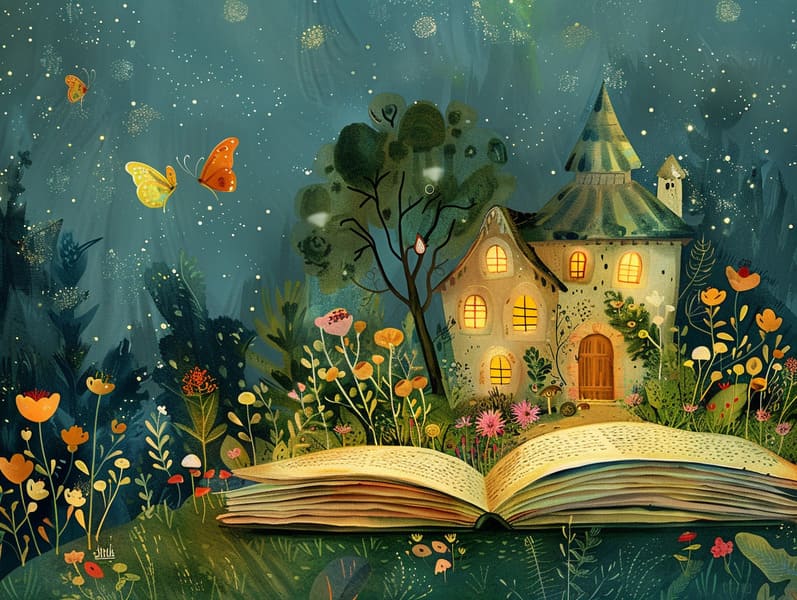The Birth of Historical Fairy Tales and Its Persistent Loveliness.
The Birth of Historical Fairy Tales and Its Persistent Loveliness.
Blog Article

Best fairy tales have historical significance. These tales have been narrated from one generation to the next centuries before they were ever inscribed. They were born from a variety of societies, including Eastern traditions. They were initially narrated among older generations, often carrying themes and messages mirroring the societal norms and beliefs of the time.
The renowned Brothers Grimm, the two Grimm brothers, were among the first to compile and release many of these beloved fairy tales. Their collection, "Grimm's Fairy Stories," included stories like "The Little Glass Slipper," "Hansel and Gretel," and "Little Snow White," which have since become mainstays in the world of timeless fairy tales. Similarly, Hans Andersen's delightful stories, such as "The Mermaid's Tale," and "The Duckling's Story," have gained the love worldwide, guaranteeing their place in the pantheon of beloved fairy tales.
Though they are old, these tales remain as relevant as ever, especially as bedtime stories for kids. These enchanting tales are now available in various formats, including artistically illustrated books, fantastical animations, and internet fairy tales.
Their lasting appeal can be linked to several fascinating points:
Ethical Lessons: Traditional fairy tales often impart important moral lessons. Tales like "The Wolf and the Liar" teach the value of sincerity, while "The Tale of the Tortoise and the Hare" illustrate the traits of determination and modesty. These stories offer kids clear distinctions between good and bad, molding their moral compass in a gentle yet lasting way.
Compassion and Knowledge: Fairy tales frequently illustrate personalities facing struggles and tests, provoking children to identify with their struggles and support their triumphs. For instance, "The Story of Beauty and the Beast" demonstrates the virtue of looking beyond appearances to comprehend the real person of a individual, strengthening compassion and appreciation.
Cultural Appreciation: Many timeless fairy tales are interwoven with the cultural contexts from which they arose. Learning from these narratives can provide delightful insights into different cultures, encouraging a sense of world respect and perception.
Imagination and Innovation: The imaginative elements in old fairy tales—mythical entities—generate children’s dreaming abilities. These fairy tales transport readers to supernatural realms, promoting inventive thinking and a sense of delight that lasts a lifetime.
Classic fairy tales are not only fantastical but also enlightening. They work as charming tools in promoting various cognitive and emotional skills in kids. When ancient fairy tales are spoken out loud, they nurture verbal skills by presenting new words and elaborate sentence structures. This practice also fosters listening abilities and attention, as little ones hang on every word, looking forward to see what happens next.
Furthermore, talking about the themes and characters of timeless fairy tales can develop problem-solving abilities and thought processes. The young are led to spot patterns, predict happenings, and understand cause and effect. These debates also ease young readers voice their thoughts and feelings, nurturing their emotional intelligence.
In today’s digital era, the existence of digital storybooks has made these fairy tales more accessible than ever. Online resources and mobile apps supply extensive collections of bedtime fairy tales that can be viewed or listened to anytime, anywhere. Fairy tales voiced are particularly liked, providing an engaging way for young ones to delight in these captivating stories. Spoken stories and spoken videos take characters and settings to life, often accompanied by delightful background sounds and soundtracks that intensify the narrative adventure.
The everlasting appeal of timeless fairy tales lies in their ability to adapt to new eras while holding onto their central messages. Contemporary modernizations of these website narratives often bring in more varied protagonists and modern settings, making them meaningful to today’s audience. However, the core values of bravery, empathy, and truth remain unchanged, continuing to strike a chord with young readers of all ages.
Traditional fairy tales also offer a sense of assurance and knownness. They offer a methodical narrative with a evident beginning, middle, and end, often coming to a close with the wrap-up of conflicts and the triumph of honesty over deceit. This dependability can be easing for the young, bringing a sense of sturdiness in an ever-changing world.
Traditional fairy tales continue to mesmerize and coach new generations, maintaining their splendor and relevance in modern society. As children's bedtime stories, they furnish a perfect blend of fantasy and learning, advancing moral values, empathy, and creativity. The accessibility of digital storybooks and the likability of fairy tales recited promise that these ancient stories remain acquirable to new generations.
By preserving and broadcasting these fairy tales, we continue to venerate the rich tapestry of cultural legacy and cultural heritage. Whether you are viewing a beautifully illustrated book, enjoying a online library, or listening through an narrated book, the grace of traditional fairy tales is always within reach. These fairy tales point out of the lasting presence of storytelling and its ability to hold us together across epochs and places.
If you are exploring a artistically illustrated book, exploring a web-based library, or listening to an sound book, the charm of ancient fairy tales is always within reach.
These tales teach us of the eternal spell of narratives and its ability to gather us across centuries and lands, creating a bond that captivates and teaches alike.